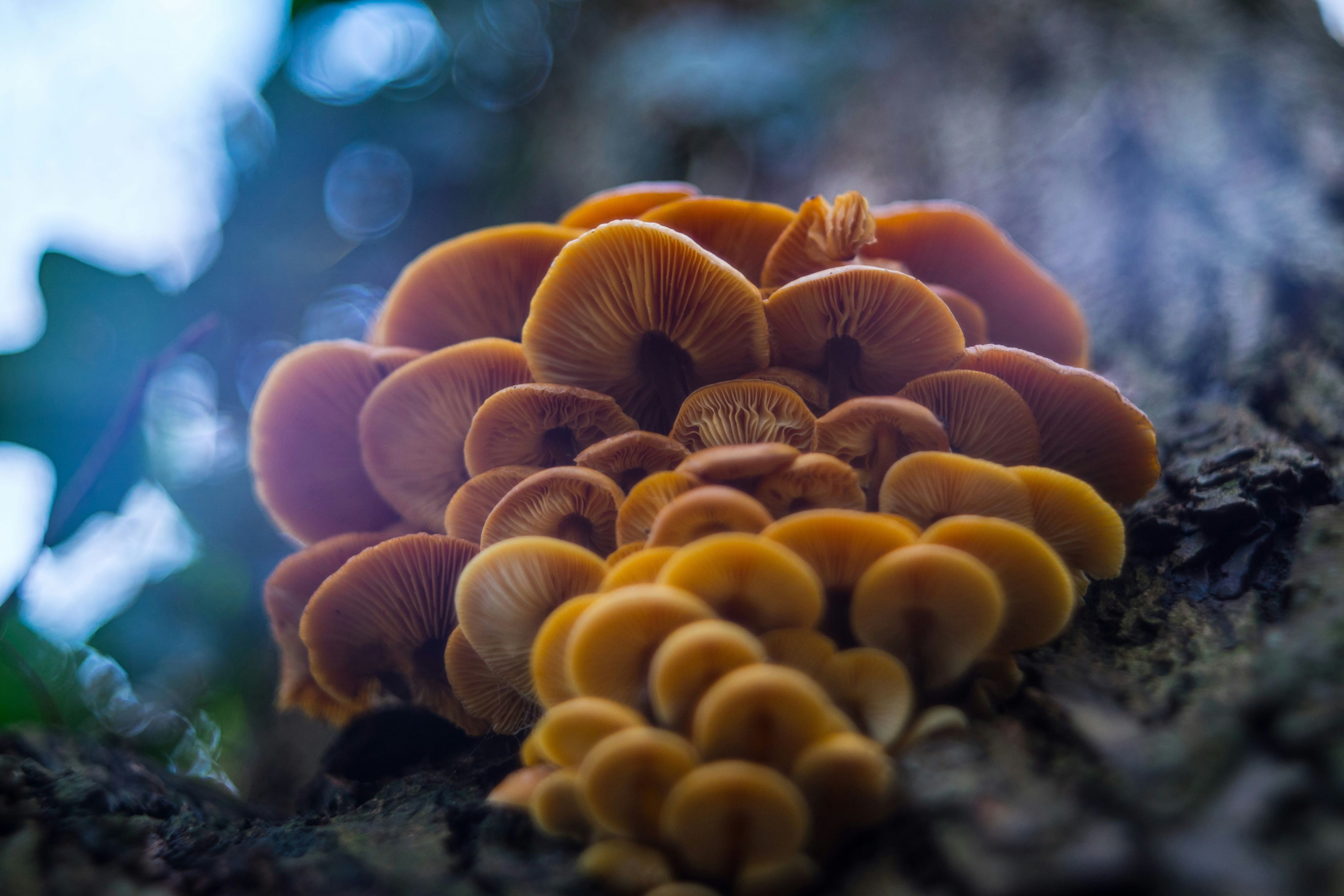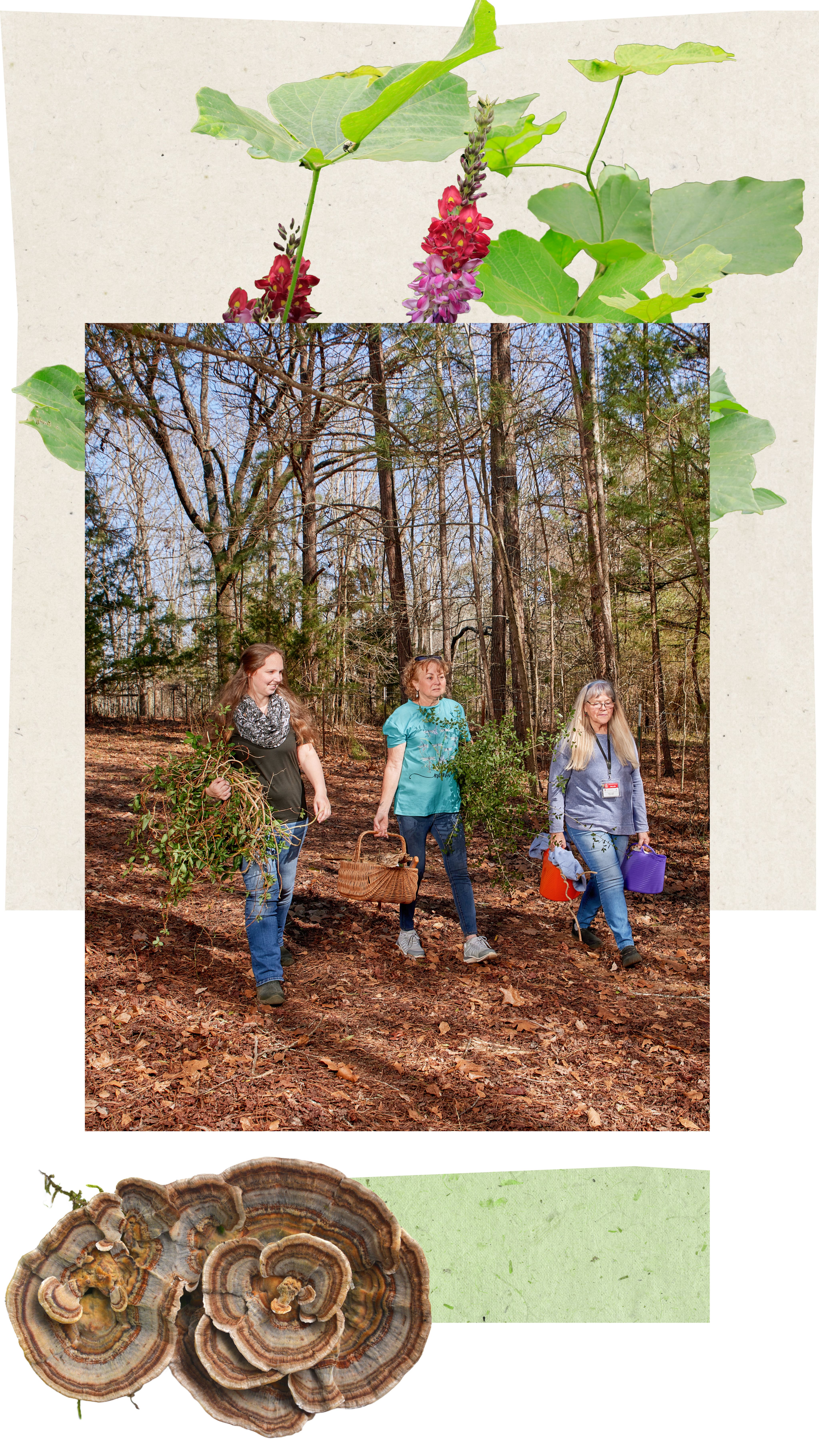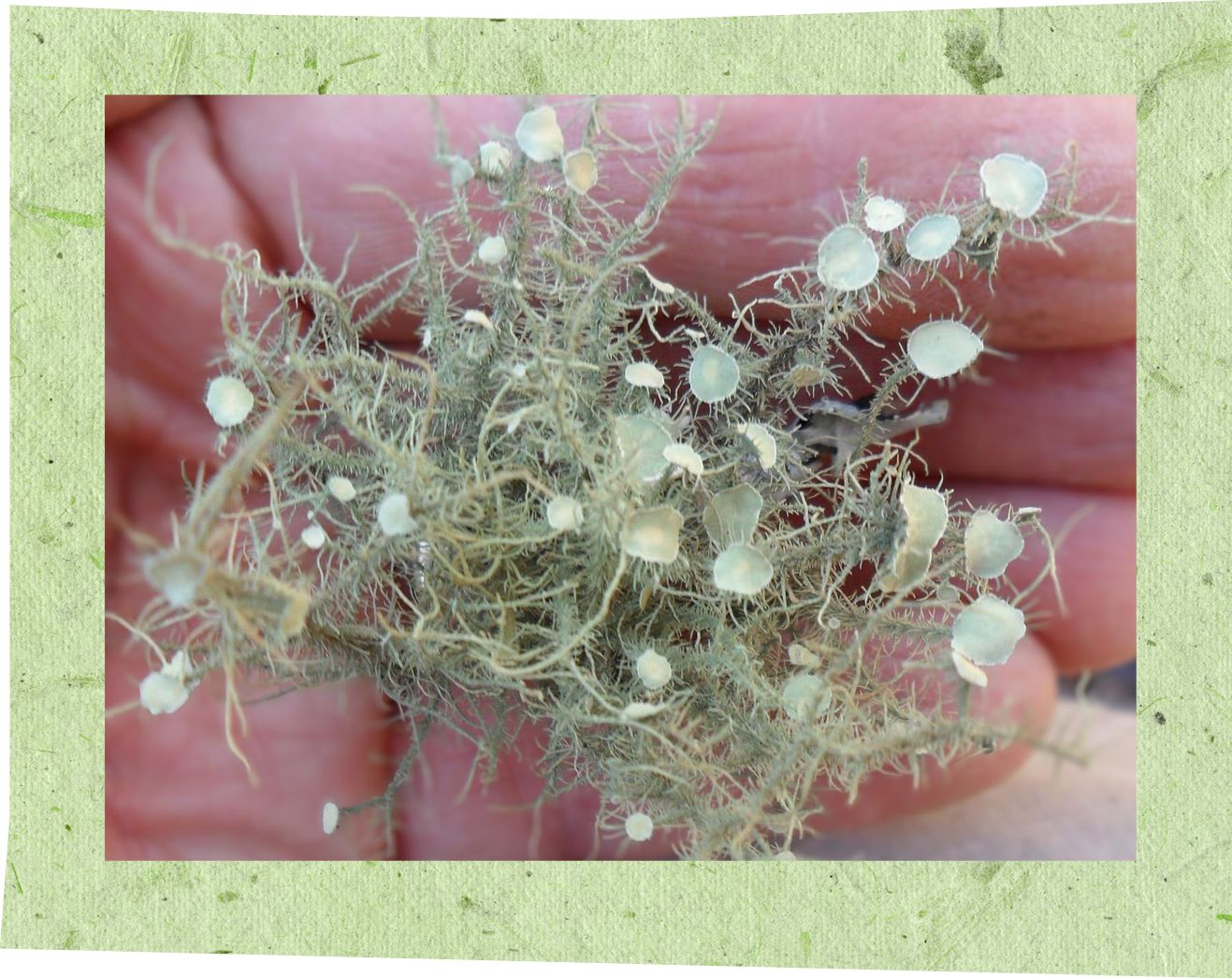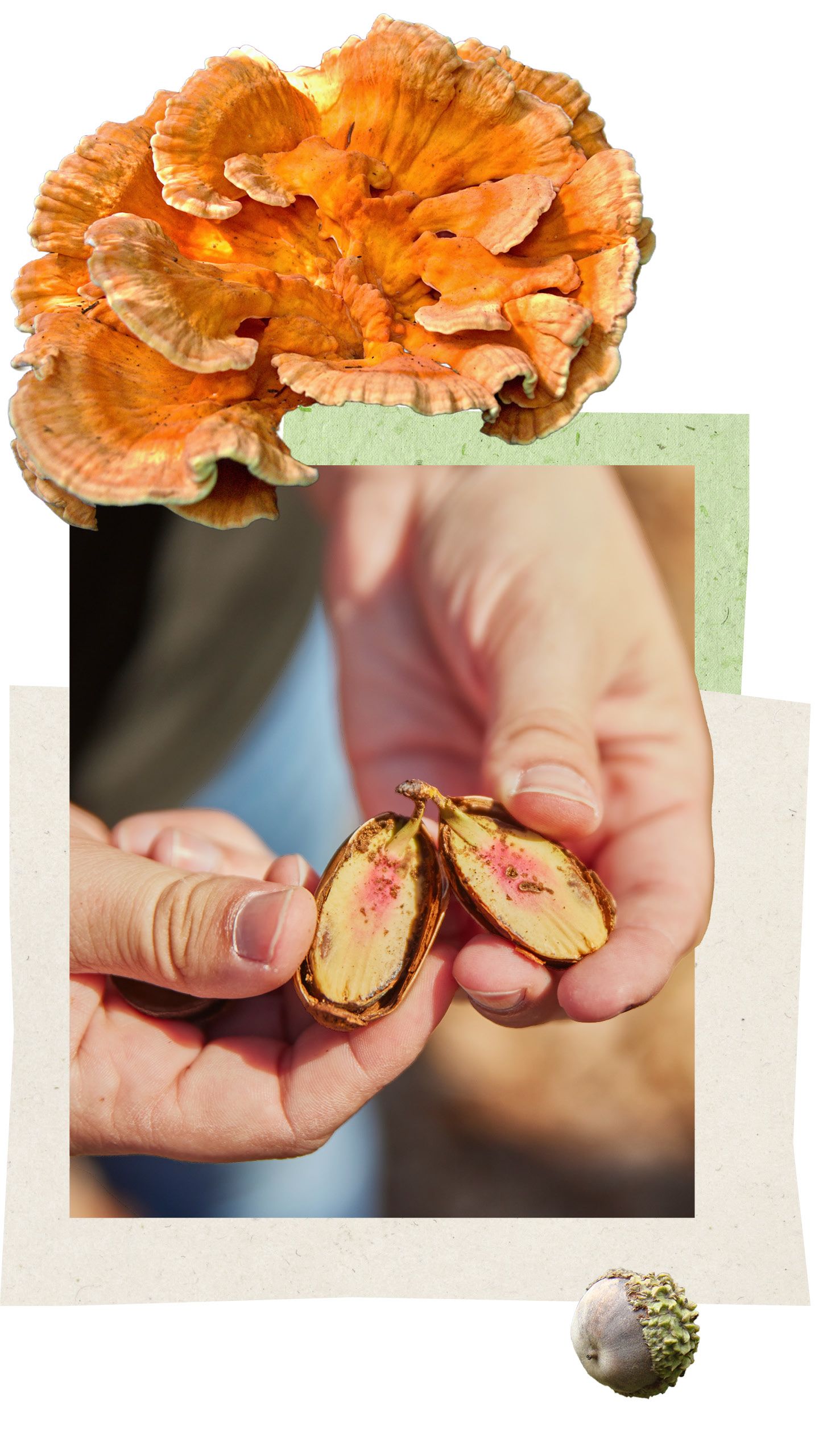Nourished by Nature
Participants in UGA Extension’s Master Forager program find a taste for the wild
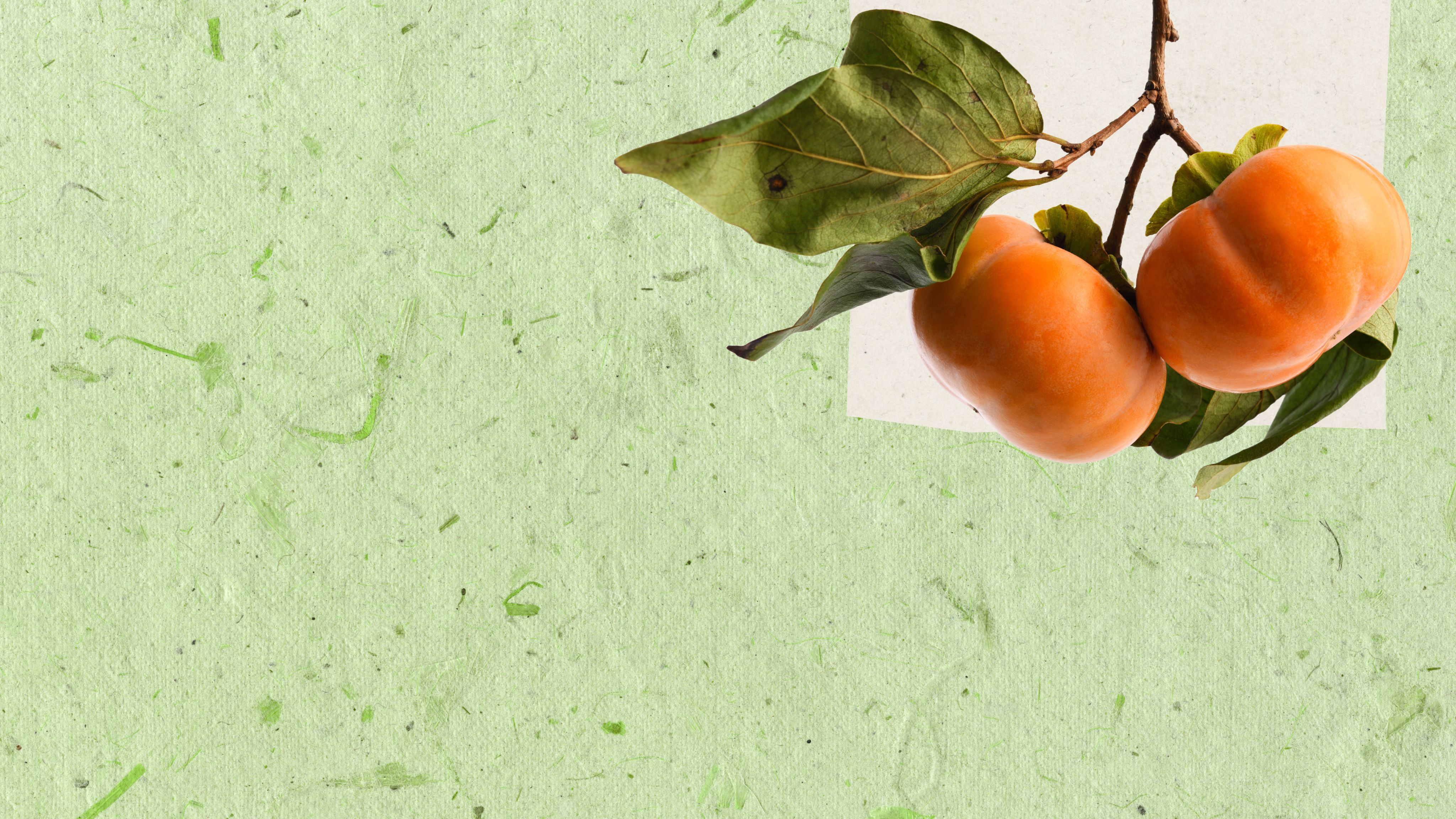
UGA Extension Agent Brooklyne Wassel and Master Foragers Carol Flanagan and Cathy LeBar carry their bounty after a class in February 2024. The class forages both kudzu (top of image) and turkey tail mushrooms (bottom left).
UGA Extension Agent Brooklyne Wassel and Master Foragers Carol Flanagan and Cathy LeBar carry their bounty after a class in February 2024. The class forages both kudzu (top of image) and turkey tail mushrooms (bottom left).
On an unseasonably warm winter afternoon, three women armed with baskets and shears made their way along a nature trail in the woods of Pike County, Georgia. Peering into the underbrush, they stopped occasionally to examine spots of interest in and under the trees and around fallen logs and decaying stumps.
A curious observer might wonder what they were searching for with such intent — unless they overheard the trio’s conversation.
“Oh, there’s yaupon holly! When it is dried and made into tea, it is highly caffeinated,” said Carol Flanagan, who made the trip from neighboring Coweta County, Georgia. Yaupon holly (Ilex vomitoria) is an evergreen shrub with petite, dark-green, oval leaves and bright, cherry-red berries that emerge in the winter.
Picking a small tuft of delicate, greenish-grey tendrils, University of Georgia Master Gardener Cathy LeBar identified the fringe-like lichen on sight. “Usnea is a fern-like plant that grows on wood,” said LeBar, who drove an hour from Newnan, Georgia, for the outing.
Beard lichen (Photo by David Stephens/Bugwood.org)
Beard lichen (Photo by David Stephens/Bugwood.org)
“If you pull it apart, it has white strands — that’s an identifying characteristic,” added Brooklyne Wassel, UGA Cooperative Extension agent and Agriculture and Natural Resources (ANR) coordinator for Pike County, who was leading the excursion. “It treats bacterial infections and is good for your lungs.”
The woods ramble and conversations weren’t random. Flanagan and LeBar were graduates of the first class of UGA Extension’s new Master Forager program, taught by Wassel and Philip Hensley, ANR Extension agent in neighboring Spalding County, Georgia.
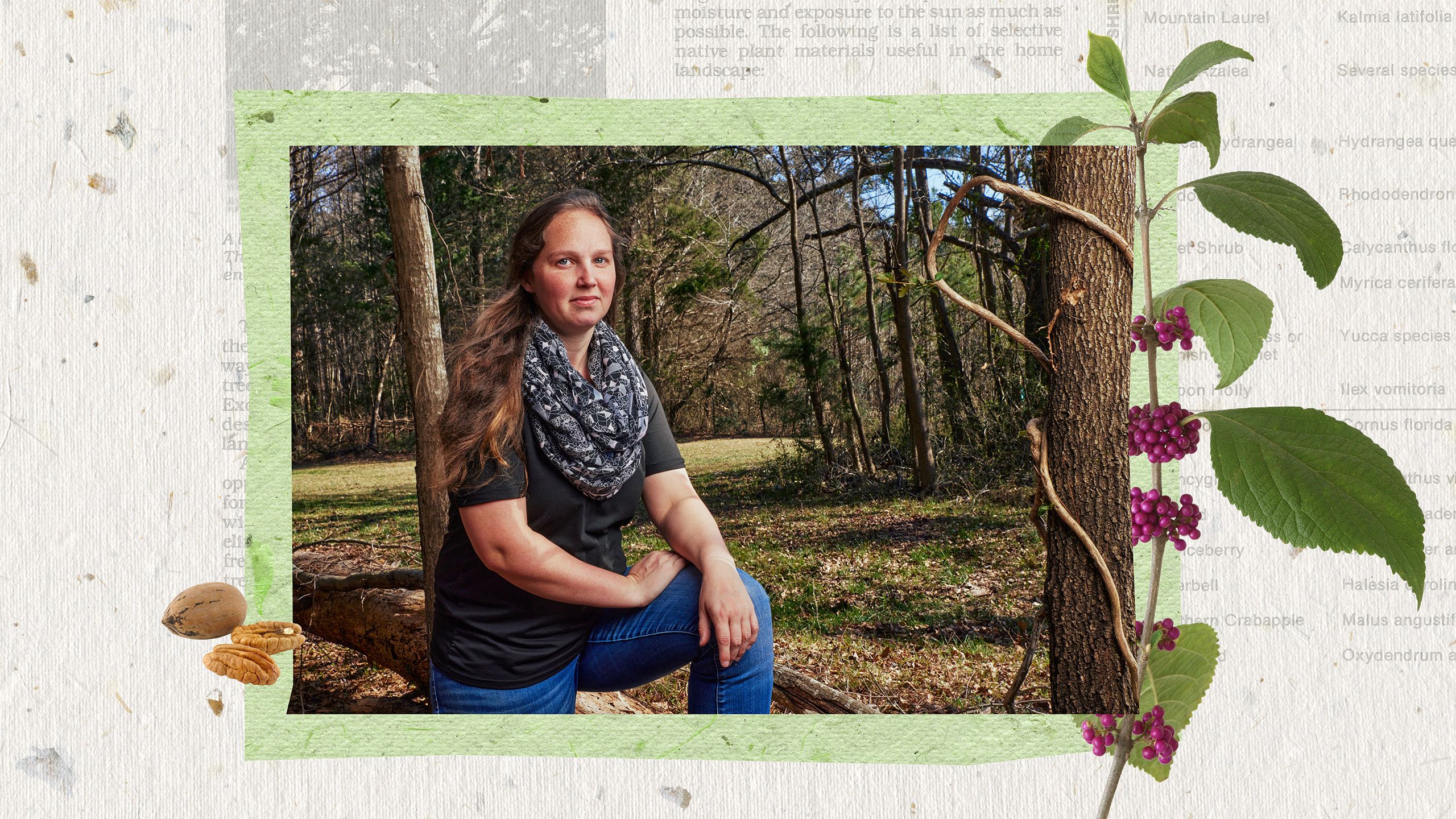
The 12-month Master Forager program was launched in August 2022.
The 12-month Master Forager program was launched in August 2022.
Wassel said the Master Forager program came about by surprise.
“I had no idea how to teach it,” Wassel said. “My undergraduate and master’s degrees are in animal science, but the more I dug, the more it snowballed.
“It started, like most good Extension programs in Georgia, as a county-based need. I had a client come to me and say, ‘You really need to do a wild harvest and foraging program.’ And I really had no concept of what that was going to look like.”
Then Wassel and Hensley attended UGA Extension’s 2021 winter conference where Holly Campbell, a public service assistant in UGA’s Warnell School of Forestry and Natural Resources, happened to be teaching a session on wild harvesting.
“We always have folks who call in and ask, ‘Can I eat this mushroom? Is this safe to eat? I found this growing in my backyard. I’ll send you a picture.’ I didn’t have any kind of background in that at all, and it was kind of a struggle to find reputable resources to give that person an answer one way or the other,” Hensley said. “Brooklyne and I were in the same winter conference class together with Holly Campbell. Literally, as we’re sitting there drinking the yaupon holly tea that we had brewed in the classroom, we kind of looked at each other like, ‘We could do this. We should do this.’”
Phillip Hensley
Phillip Hensley
“We approached her after class and said, ‘We’d like to really develop this.’ It eventually went from the idea for one workshop to an entire class,” Wassel said. “You get a taste for it in one workshop, but you really want to go all year because foraging is a yearlong, season-after-season adventure. So, we took that and ran with it.”
For the first year, Wassel and Hensley drew on Campbell’s workshop content to create a 12-month Master Forager program they launched in August 2022.
“We wanted to cap the class at 10 participants to keep it as hands-on as possible,” she said.
After attending a year of monthly meetings and foraging forays, 10 UGA Master Foragers from around the state completed the program, which culminated in July 2023 with a potluck dinner the participants prepared using foraged materials.
“Kudzu and mushroom quiche was everybody’s favorite,” said Wassel. “There wasn’t a piece left.”
“With the Master Foragers program, we gained a new appreciation of something that was there all along. Nature means a lot more once we can look at it through a different lens.”

The demand for the program was so strong that the next class started in August 2023. It’s in process at present, and 14 aspiring Master Foragers drive from around the state to participate.
“We had folks from other states reach out, as well as people from across Georgia. We ended up implementing a waitlist, which we never expected in a million years,” Wassel said. “Most of our waitlisted participants from last year are in the cohort this year. That just shows that the need has followed from year to year and that these people are really driven to get this information. It was so unique for Extension, and a lot of people saw it as an opportunity to get information from a resource that they trusted, but in an area that hadn’t really been explored before.”
In preparation for the second Master Foragers cohort, Wassel and Hensley fine-tuned the class to narrowly focus on items of the most interest and to incorporate more interactive elements.
“This gives them the reason to step outside, to find things and to ask questions about things they want to know,” Hensley said. “The amount of things people want to know if they can eat that they found growing in their yards always amazes me. We’ve learned about mushrooms and things from dandelions to tree bark. I even taught a section on insects we can forage for.”
Barnesville, Georgia, resident Brutz English is a member of the second Master Forager class, which will graduate in July 2024. An Eagle Scout in his early years and now a UGA Extension Master Beekeeper and internationally known honey judge, he was drawn to the program to learn more about the outdoors he loves.
“I’m a big fan of flowering plants, trees, shrubs and flowers with pollen and nectar,” he explained. “Beekeeping drew me to this.”
He was fascinated by the session on edible bugs, known as entomophagy. “Some taste better with a little seasoning,” he joked.
Flanagan had no trouble explaining the draw. “I had an interest in kudzu a long time ago, but I never heard of a class until this one. My goals were to learn more about what God provides for us in nature, both for food and for medicinal purposes. I’m still learning,” she added. “There is too much to know.”
Flanagan regularly wears the scarf she dyed during the program using dye she created from black walnuts. She also talked about her plan to make goldenrod muffins with goldenrod jelly and goldenrod tea for an upcoming garden club meeting.
Goldenrod (Photo by Howard Schwartz, Bugwood.org)
Goldenrod (Photo by Howard Schwartz, Bugwood.org)
“Salve made from goldenrod is one of the best things for arthritis and muscle aches. My husband is a disabled veteran with neuropathy, and it helps,” Flanagan said.
For LeBar, the Master Forager program was a natural extension of an interest developed during childhood.
“My mother would take us for walks in the woods and taught us how to identify trees by their leaves, and after they fell, the bark. She thought it was important to learn about nature and wildflowers,” she said, adding that her family grew everything they ate.
LeBar said that learning new things was her favorite part of the Master Forager program.
“At graduation I brought chanterelle burritos. We also had chocolate chirp — as opposed to chocolate chip — cookies made from cricket flour. They were delicious. It was an experience,” she added.
Her status as Master Gardener and Master Forager aside, LeBar emphasized the importance of making “absolutely sure” foraged materials are safe before consuming them. She owns 20 books on mushrooms, but still takes a photo and texts it to her mentor before eating any she collects.
Bucket of ferns and leaves
Bucket of ferns and leaves
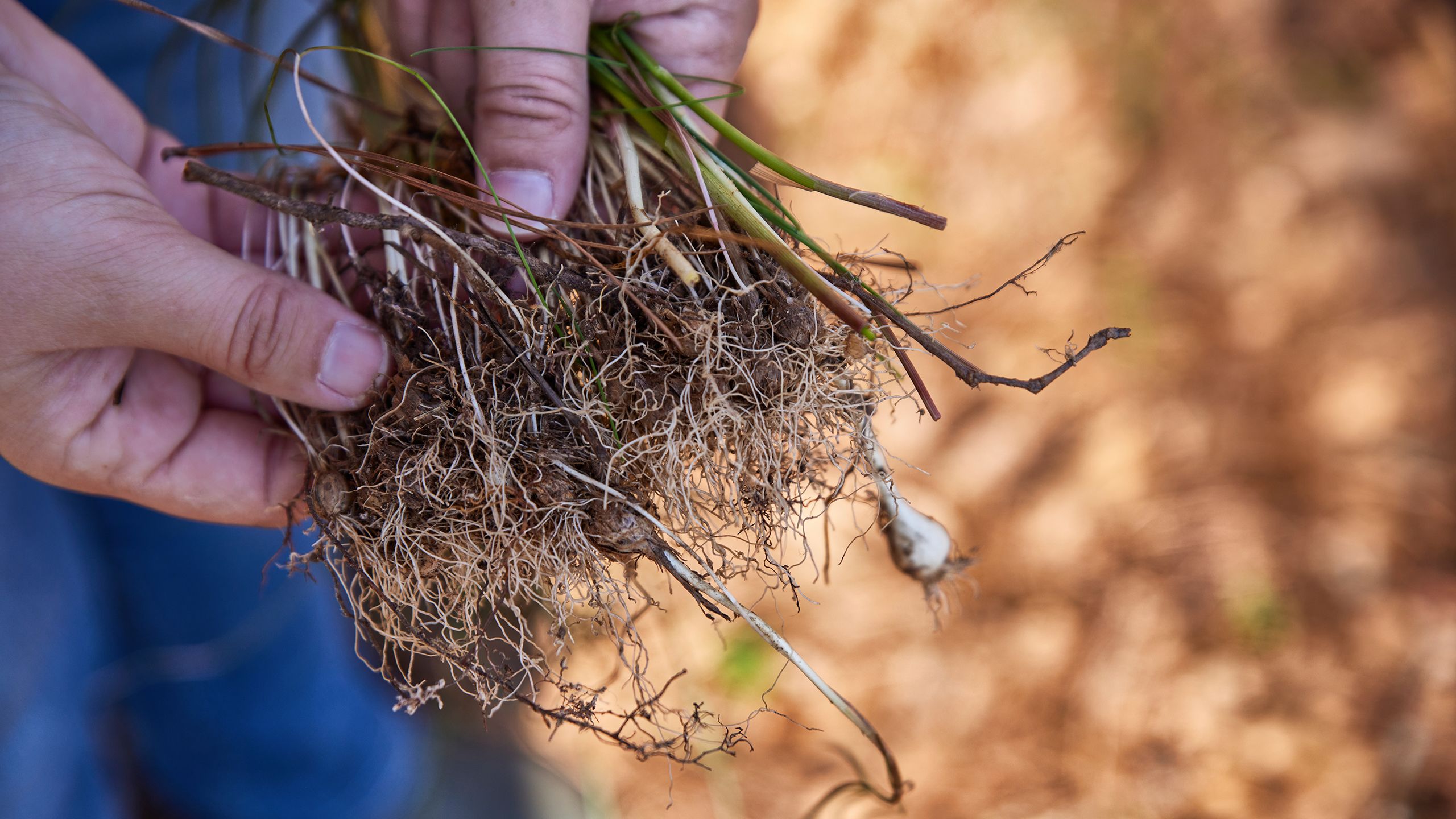
Brooklyne Wassel
Brooklyne Wassel
For Wassel, the Master Forager program has become much more than an Extension program. “It has become a passion. It is a larger part of who I am, not just part of my job. I’ve incorporated it into my personal life, teaching my three kids,” she said.
Her 4- and 6-year-old sons come running to her to ask permission to eat the oxalis (Oxalis pes-caprae), commonly known as “sour grass,” that grows right outside their door.
“With the Master Foragers program, we gained a new appreciation of something that was there all along. Nature means a lot more once we can look at it through a different lens,” Wassel said.
That same enthusiasm for learning extends to grown-ups.
“Pine needle tea is really good! I was a little dubious, but it is lovely, crisp, refreshing, a little citrusy,” English said. “Here I’ve been surrounded by pine trees my entire life and had no idea.”
Can you detect these delectables in the image below?
Examine this list and then scroll down to test your observation!
Editor’s Note: This illustration is for entertainment purposes only and is not to be used as a guide for safe foraging.
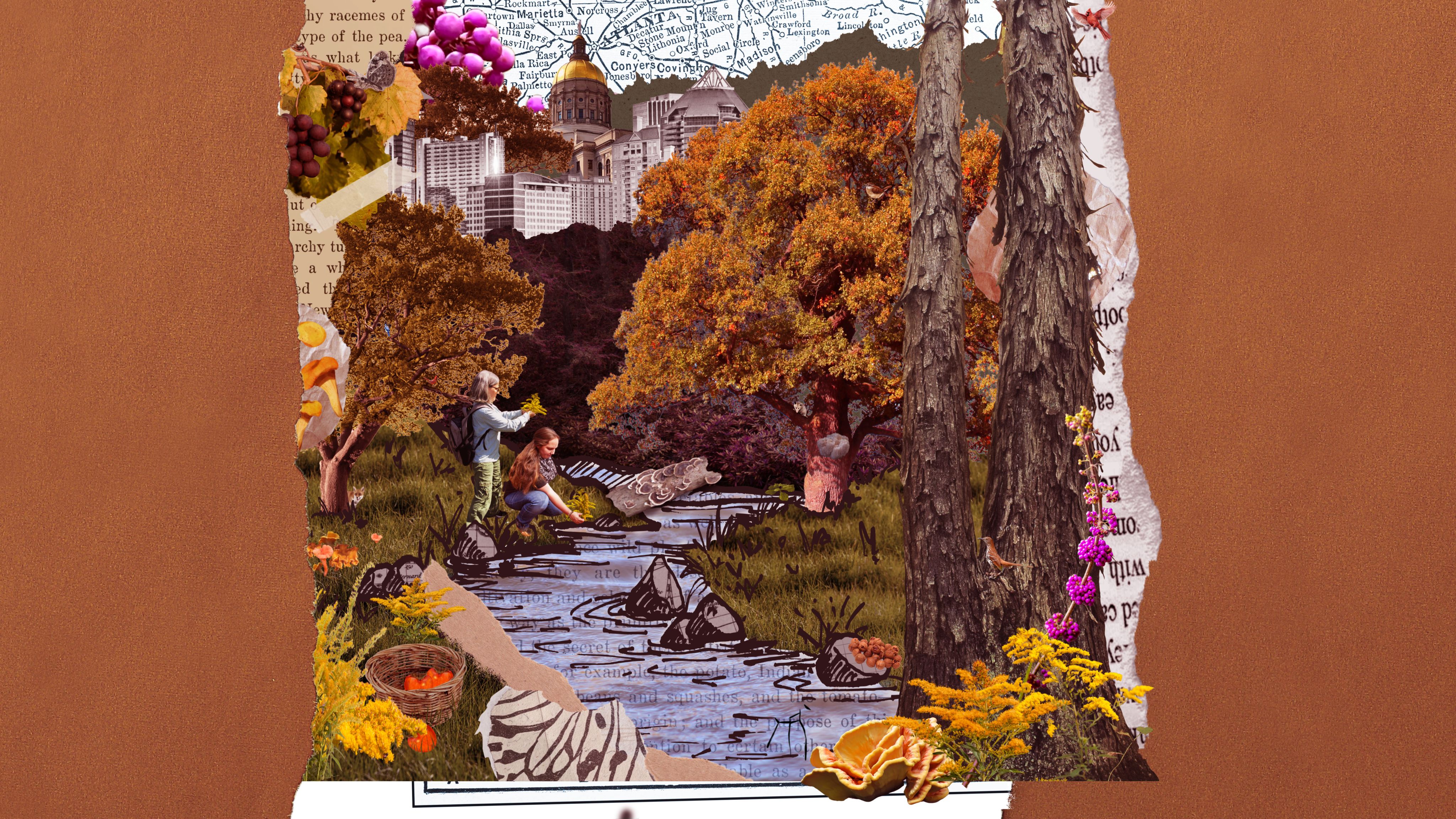
News media may republish this story. A text version and art are available for download.
